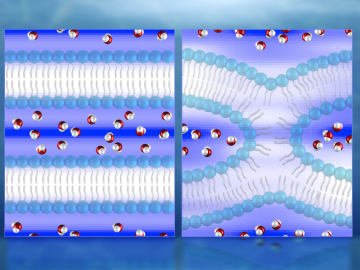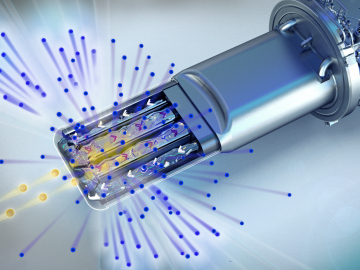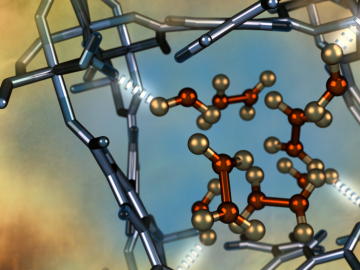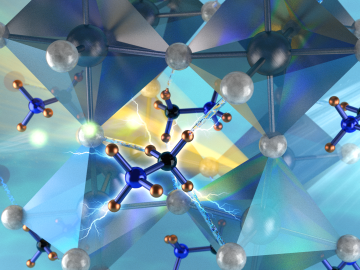
Filter News
Area of Research
- (-) Neutron Science (85)
- Advanced Manufacturing (14)
- Biological Systems (14)
- Biology and Environment (84)
- Biology and Soft Matter (1)
- Building Technologies (3)
- Chemistry and Physics at Interfaces (5)
- Clean Energy (245)
- Climate and Environmental Systems (2)
- Computational Biology (4)
- Computational Engineering (2)
- Computer Science (4)
- Data (1)
- Energy Frontier Research Centers (8)
- Energy Sciences (2)
- Fossil Energy (2)
- Fuel Cycle Science and Technology (1)
- Functional Materials for Energy (7)
- Fusion and Fission (24)
- Fusion Energy (2)
- Geographic Information Science and Technology (2)
- Isotope Development and Production (2)
- Isotopes (17)
- Materials (238)
- Materials Characterization (2)
- Materials for Computing (13)
- Materials Synthesis from Atoms to Systems (6)
- Materials Under Extremes (6)
- National Security (40)
- Nuclear Science and Technology (29)
- Nuclear Systems Modeling, Simulation and Validation (1)
- Nuclear Systems Technology (1)
- Quantum Condensed Matter (1)
- Quantum information Science (1)
- Reactor Technology (1)
- Renewable Energy (1)
- Sensors and Controls (2)
- Supercomputing (116)
- Transportation Systems (5)
News Type
News Topics
- 3-D Printing/Advanced Manufacturing (3)
- Artificial Intelligence (1)
- Big Data (1)
- Bioenergy (3)
- Biology (4)
- Biomedical (4)
- Biotechnology (1)
- Climate Change (1)
- Composites (1)
- Computer Science (6)
- Coronavirus (5)
- Cybersecurity (1)
- Decarbonization (1)
- Energy Storage (2)
- Environment (3)
- Frontier (1)
- Fusion (1)
- High-Performance Computing (1)
- Materials (6)
- Materials Science (13)
- Microscopy (1)
- Nanotechnology (6)
- National Security (1)
- Neutron Science (45)
- Nuclear Energy (1)
- Physics (7)
- Quantum Science (4)
- Security (1)
- Space Exploration (1)
- Summit (4)
- Sustainable Energy (2)
- Transportation (3)
Media Contacts

OAK RIDGE, Tenn., May 14, 2019—Advanced Research Systems, Inc., has licensed a technology designed to automatically refill liquid helium used in laboratory equipment for low-temperature scientific experiments, which will reduce downtime, recover more helium and increase overall efficiency.

OAK RIDGE, Tenn., March 20, 2019—Direct observations of the structure and catalytic mechanism of a prototypical kinase enzyme—protein kinase A or PKA—will provide researchers and drug developers with significantly enhanced abilities to understand and treat fatal diseases and neurological disorders such as cancer, diabetes, and cystic fibrosis.

A team of scientists has for the first time measured the elusive weak interaction between protons and neutrons in the nucleus of an atom. They had chosen the simplest nucleus consisting of one neutron and one proton for the study.

Scientists at the Department of Energy’s Oak Ridge National Laboratory have created a recipe for a renewable 3D printing feedstock that could spur a profitable new use for an intractable biorefinery byproduct: lignin.

The Spallation Neutron Source at the Department of Energy’s Oak Ridge National Laboratory has broken a new record by ending its first neutron production cycle in fiscal year 2019 at its design power level of 1.4 megawatts.




Led by the University of Manchester, an international team of scientists has developed a metal-organic framework material (MOF) that exhibits a selective, fully reversible and repeatable capability to remove nitrogen dioxide gas from the atmosphere in ambient conditions.



